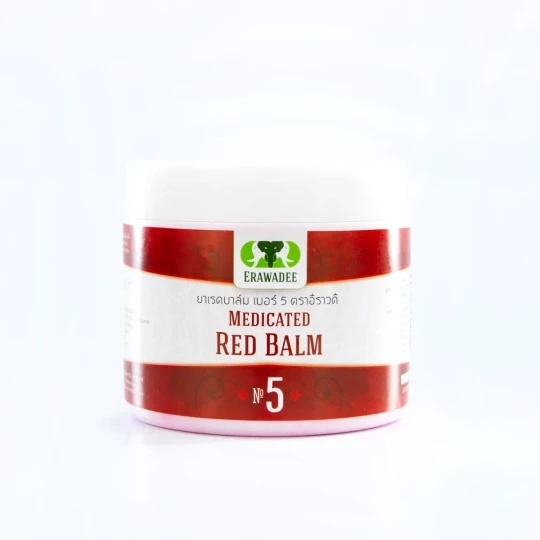Ya Mong Dang Red Balm 250gr
Dilates blood vessels at the area of application, the result is a pleasant feeling of warmth. Helps in elimination of muscular spasm and increases metabolism in the area. The active ingredients of the balm penetrate deep into the skin and affect the nerves, which results in rapid pain relief. Has a strong warming effect. Relieves swelling, eliminates muscle spasm. Muscles and ligaments become more elastic, capable of easy movement, and resistant to stresses and injuries.
Specifications
Aluminium container, 250gr
Indications
- Inflammatory and degenerative diseases of the musculoskeletal system - arthritis, arthralgia (in complex therapy with N16 Thao En On).
- Strong acute pain in arthritis (including rheumatoid arthritis).
- Gout (the main medicine is N38 Ya Nuad Maw).
- Inflammatory diseases of the peripheral nerves, pain and impaired sensitivity (neuritis).
- Inflammation of the mucous bags of the joints (bursitis).
- Inflammation of the muscle tendon (tenosynovitis).
Contraindications
Do not apply on damaged or irritated skin.
Directions for use
External use only! Apply a small amount (one pea-sized drop is enough for more than 100 cm2 of skin) and massage into the affected area 1-3 times a day. For better effect it is desirable to cover the damaged area with some cloth. After application wash your hands thoroughly.
Caution
Avoid contact with the eyes, nose or mouth - it can cause a harmless but unpleasant burning sensation. Remove from skin: use vegetable oil or nourishing cream, from the eyes – use clean vaseline.
Storage
The drug should be stored away from direct sunlight, at a temperature between 15 and 30 degrees Celsius.
Feedback and questions:
5/5 (5 reviews)
If you have any questions please contact us:

